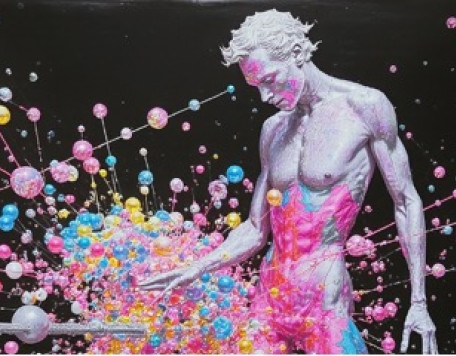© Pint of Science, 2025. All rights reserved.
Big complicated things are generally made up of smaller simpler things but how does the complexity arise? Our experts will discuss how in the case of crystals and nanomaterials replacing one atom in a billion, or modifying the way they are aligned, changes the overall properties dramatically. Join us to find out how defects in crystals and the contents of a pencil case can lead to novel science.
Many mickles make a muckle - defects in metallic crystals
Professor Adrian Sutton FRS
(Professor of Nanotechnology, Imperial College London)
“Crystals are like people - it is the defects in them that make them interesting”. Our world is shaped by defective crystals. Defects turn metals into malleable materials from which we can make car bodies, furniture, buildings, jet engines … Some defects seem to have a life of their own, moving at high speeds, multiplying, and working together to create less benign defects. Join Adrian as he tours through the inner workings of crystalline metals and shows the connection with a soapy bath and a pint of bitter.
Do-it-yourself nanotechnology: how to make, measure and modify graphene and other nanomaterials
Dr Johannes Lischner
(Royal Society Research Fellow, Imperial College London)
Nanomaterials, such as graphene, are a new class of materials that exhibit fascinating properties that cannot be found elsewhere. They have the potential to revolutionise many different areas such as information technology, energy production/storage, medicine and many others. With nanomaterials being at the cutting edge of research for the last decade in labs all over the world, you might expect that making them is very difficult... but sometimes you only need a pencil and some tape to get a Nobel prize.







Map data © OpenStreetMap contributors.
Map data © OpenStreetMap contributors.
Other The George IV events
2025-05-19
Human-Like Artificial Intelligence
The George IV
185 Chiswick High Road, London, W4 2DR, United Kingdom
2025-05-21
When Feelings Go Wrong – The Science of Emotions and Social Behaviour
The George IV
185 Chiswick High Road, London, W4 2DR, United Kingdom




